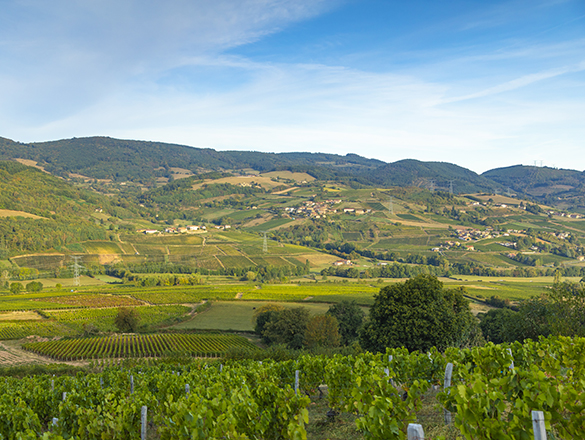
The vineyards of Bourgogne produce some great wines with a historical and international reputation. However, the region is not simply limited to its iconic appellations. In addition to its Village Premier Cru and Grand Cru AOCs, it also produces a range of wonderful Régionale and Village appellations to explore.
You will also find a full list of the Bourgogne’s Climats and lieux-dits on this page.
Check out the complete list of the 84 Bourgogne appellations.
However, your exploration has only just begun. Bourgogne wines have never before offered such high quality. Besides our range of internationally celebrated wines, try some of our lesser-known appellations where there are lots of surprises in store.
And for a fun way to find out more about the wines on offer, try out our “Which Bourgogne wine is right for me?” quiz, or check out Bourgogne Maps to take an interactive tour of the region.
Regional Appellation
VIGNOBLE DU MÂCONNAIS
31 juillet 1937
Reds and rosés - Gamay.
Area under vine:
Reds and rosés: 23.97 ha
Annual harvest:
Reds and rosés: 142,416 bottles
Source: 5-year average, 2017-2021
An additional geographical denomination that is part of the Régionale Mâcon appellation in the Mâconnais. According to the 2005 specifications rules, the name Mâcon-Serrières refers to red and rosé wines grown within a defined area in the village of Serrières.

Their translucid cherry red color with aromas of red fruit jelly combines with floral notes of peony and rose petal, along with touches of undergrowth, sometimes with a tinge of animal. No doubt this more virile side is due to the terroir here close by the Beaujolais.
Ideal for ageing, these wines evolve towards notes of strawberry compote, marshmallow, and pepper, while their breadth on the mouth offers well-integrated tannins, leaving a considerable length.
The rosés are often produced by bleeding in the vat, resulting in lively, forthright wines with an acidulated structure.

Red: with its aromatic opulence and fleshy mouth, this wine is a remarkable companion with more fibrous meat dishes such as duck ravioli or braised côte de boeuf (ideally from the Charolais). For wine-marinated dishes, choose a hot year such as 2018, which will help soften the acidity of the sauce in a boeuf bourguignon or a snail meurette. To finish a meal, try a washed-rind cow’s milk cheese that’s not too old, or something drier like a Palet de Bourgogne or a Cendré de Vergy, to match the freshness of the Gamay.
Serving temperature: 14-15°C.

At the southwestern extremity of the mounts on the Mâconnais, the vines of Mâcon-Serrières extend south from the Mâcon-Pierreclos AOC and north of the village of Cenves.
The Mâcon-Serrières appellation only applies to red and rosé wines and is like a precious ruby in the golden setting of the vineyards of the Mâconnais, which are mostly planted with Chardonnay. This southern part of the Mâconnais with its crystalline rocks could be described as the start of Beaujolais.
In the 17th century, the aldermen of Mâcon, forerunners to municipal councilors, encouraged the local red wines to be produced using a sophisticated varietal called “Petit Gamay Noir with white juice”.

The winegrowing slopes of Serrières are found on either side of the steep-sided valley of the Petite Grosne at between 300 meters and 415 meters above sea level. The climate of Serrières leads to a growth cycle of the vines that is a little later than in the rest of the Mâconnais.
Mainly facing east and southeast, the Gamay varietal enjoys a very sunny aspect here. It flourishes on siliceous Trias terrain dating back 200-250 million years, and reddish-pink sand.
